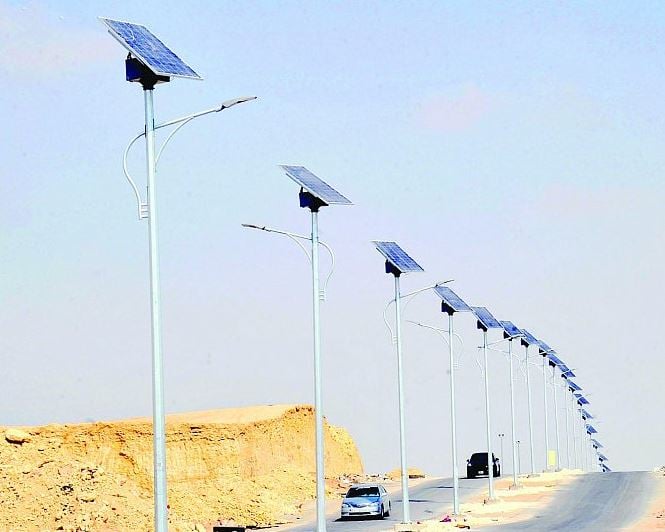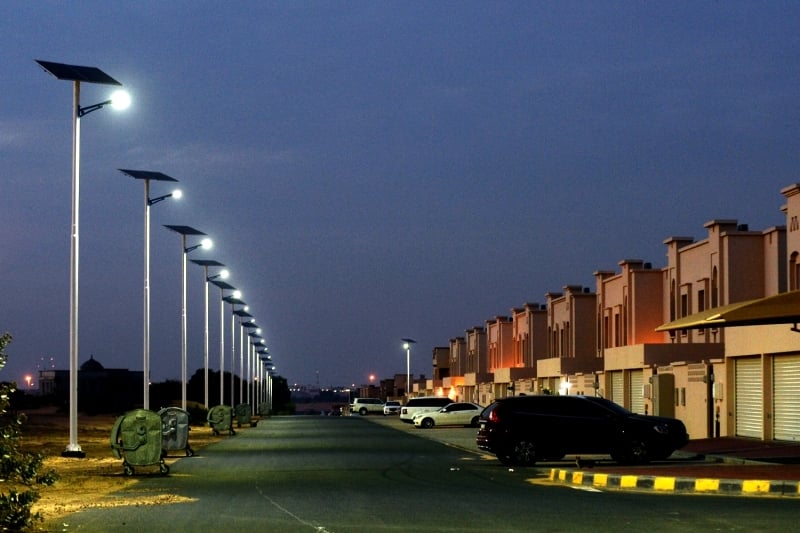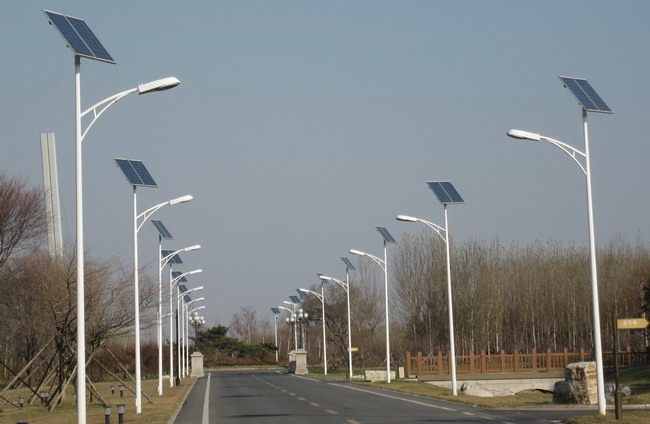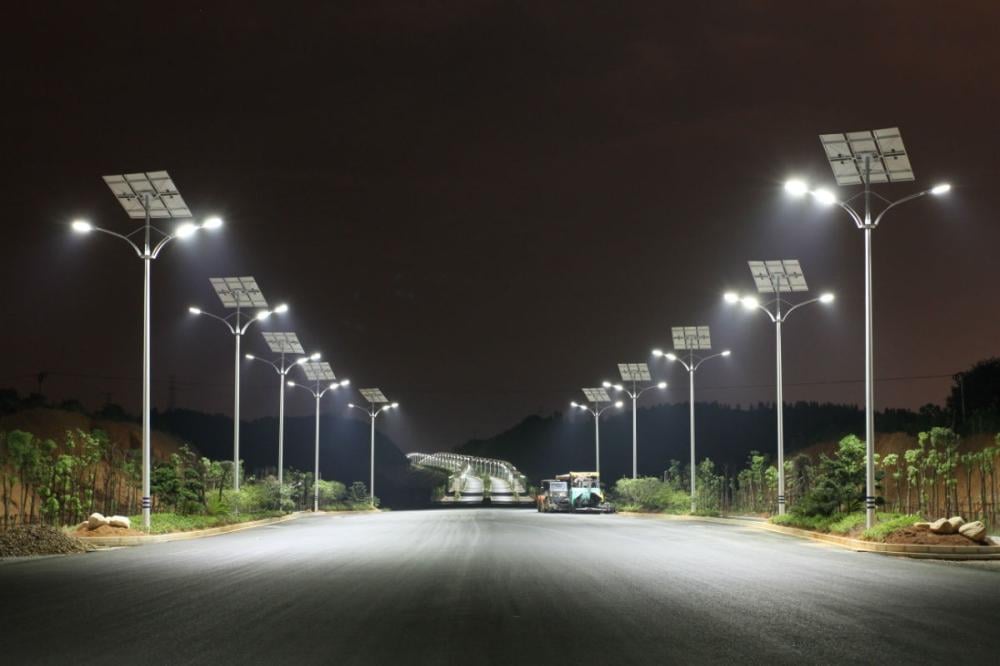- Solar street lighting height calculation

When determining the installation height of solar street lights, if the height of the lamp posts is 3-4 meters, the formula H≥0.5R can be used. Where R is the radius of the lighting area, and H is the height of the street lamp.
If the height of the light pole is higher, for example more than 5 meters, the adjustable lamp panel can be used to regulate the lighting coverage to meet different lighting needs. This adjustable panel can be moved up and down on the pole to achieve the best lighting effect.

Solar street light distance calculation
For general road lighting, when the width of the road does not exceed 15 meters, the lighting is usually arranged on one side. The spacing of the lights on this side depends on the height of the lighting poles. For columns less than 6 metres, the spacing can be set to around 10 metres, while for columns longer than 6 metres, the spacing can be between 10-25 metres. Details should be determined based on actual site conditions.
For lighting poles more than 10 meters high, the general formula is distance between lights = pole height x 3.
In addition, for 8m pole solar street lights, the distance between lights should be 25-30m using cross lighting. This method is suitable for roads with a width of 10 to 15 meters. For 12-meter pole solar street lights, the longitudinal distance between the lights should be 30-50 meters with symmetrical illumination, and the road lighting width should exceed 15 meters.

Recommendations on installation height and spacing of solar street lights for different situations:
Based on the construction drawings and site geological conditions survey, and in places without overhead obstacles, the installation site of solar street lights should use a reference distance of 10-50 meters. Specific requirements should be confirmed with the engineer according to the project needs, or by contacting us.
- For an average road width of about 3-4m with a pole height of 3-4m, the installation distance should be 10m;
- For an average road width of about 5-7m with a pole height of 5-7m, the installation distance should be 10-25m;
- For an average road width of 8 to 12 meters and a pole height of 8 to 12 meters, the installation distance should be 30 to 40 meters;
- For major traffic arteries with a width of about 20 meters and a pole height of 12 to 14 metres, the spacing should be at least 40 metres.
When the width of the road exceeds 15 metres, and there is heavy vehicular and pedestrian traffic that requires aesthetic consideration, overlapping lighting on both sides or symmetrical lighting can be adopted. In actual design work, one often faces several objective constraints. For example, when the road is wide but lighting can only be installed on one side, the inclination angle of the lighting fixtures can be increased, generally up to an angle of 15 degrees. If the tilt angle is too high, the lighting efficiency of the fixtures decreases, and glare can become a vision problem.
Different site reference domains:
- Parks and tourist areas: suitable for installing solar street lights with a length of about 7 meters, and the installation distance should be 10-25 meters;
- Along national roads: the height should not be less than 12 metres, leaving a distance of not less than 40 metres.
- City side roads: the height should not be less than 10 meters, with an installation distance of 30 meters;
- Rural roads: heights of 6m or more, with an installation distance of 25-30m. Additional street lights should be installed at corners to avoid blind spots;
Four-lane roads or main traffic arteries: 8-12m high, with symmetrical axial lighting, installation distance 30~50m.
For arrangements with lights on both sides, if the distance between the lighting columns is too large, it is recommended to use a criss-cross arrangement, as the reason for the large spacing is often due to insufficient budget or low light intensity level.

